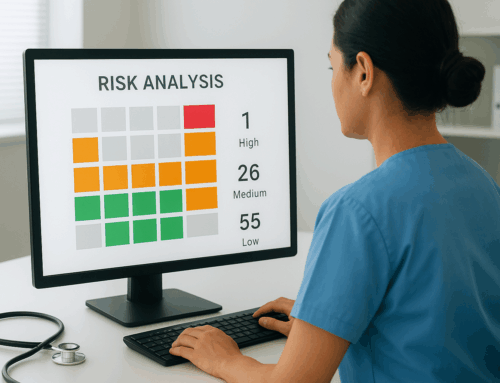
The Occupational Safety and Health Administration (OSHA) has mandates to protect workers on the job and while they perform their duties. Healthcare workers face unique hazards, like lifting injuries, radiation exposure, and workplace violence, that put them at risk for injury, illness, and even death. Healthcare organizations and medical offices must understand the OSHA compliance requirements and take measures to adhere to them.
OSHA in Healthcare
Operating as an agency of the U.S. Department of Labor, OSHA’s mission is to “ensure safe and healthful working conditions for workers by setting and enforcing standards and by providing training, outreach, education, and assistance.” OSHA provides regulations to protect workers of all sectors against chemical exposures and safety hazards.
While virtually every workplace comes with its threats to safety and well-being, healthcare employees face unique risks:
- Biological hazards
- Bloodborne pathogens
- Chemical and drug exposures
- Laser hazards
- Lifting, repetitive tasks, and other ergonomic issues
- Radioactive and X-ray hazards
- Waste anesthetic gas exposure
- Workplace violence
A 2021 study found that the total injury rate for all healthcare workers was 34.1 per 1,000. Nurses’ rates of injury were significantly higher than those of other professionals in this sector.
Healthcare Standards Under OSHA
OSHA requires that all employers, including medical offices and healthcare organizations, follow these standards:
- Identify health and safety hazards and lower risks to acceptable levels
- Inform workers about all known health and safety risks in the work environment
- Maintain records of accidents and workplace illnesses, injuries, and fatalities
- Notify OSHA of any serious work-related injury, hospitalization, or death
- Provide employees with injury and illness data and OSHA violations
- Provide all employees with OSHA compliance training, including maintaining safe working conditions
- Provide personal protective equipment at no cost when it is necessary
- Ensure no workers face discrimination or retaliation for reporting safety hazards or exercising their rights under the Occupational Safety and Health (OSH) Act
In addition to the general OSHA compliance requirements for all employers, healthcare organizations and medical practices must observe the following:
- Bloodborne Pathogens Standard: This standard includes safeguards against exposure to and hazards associated with bloodborne pathogens.
- Hazard Communication Standard: Workers have the “right to know” about the potential hazards of their jobs and the environments in which they work.
- Ionizing Radiation Standard: Employers must ensure workers’ exposure to ionizing radiation does not exceed specific limits.
- Personal Protective Equipment (PPE) Standard: Employers must provide various types of PPE, such as gowns, gloves, respirators, eye protection, and other materials that are properly stored, used, and sanitized.
- Medical Office and Practice OSHA Inspections Standards: Employers must monitor workplaces regularly for additional hazards and exposures not addressed by the previous standards.
The most common violations of OSHA compliance requirements in healthcare include a lack of training on bloodborne pathogens, not supplying safety data, and failing to provide appropriate PPE. An OSHA violation can have serious consequences, such as fines exceeding $150,000, depending on the nature and severity of the infraction.
It can be complicated and overwhelming for providers to know what is required for OSHA compliance. That is why a medical office can benefit from working with a healthcare compliance company that can take the guesswork out of OSHA regulations. An enterprise like Compliancy Group provides consultations, resources, software, and other tools to help providers understand and adhere to OSHA regulations.
Learn how Compliancy Group can work with your medical practice to help you stay updated on OSHA compliance requirements. With this partnership, you can stay informed and maximize worker safety.









